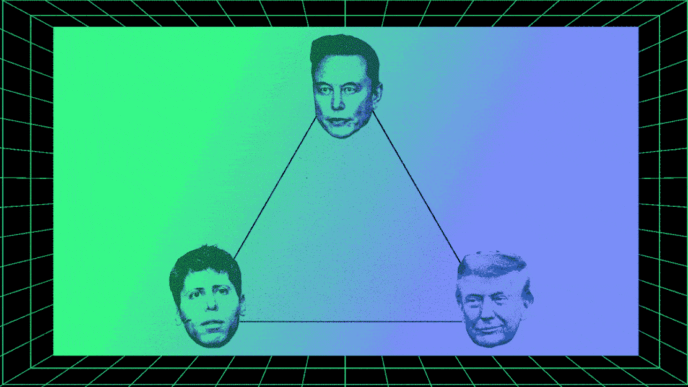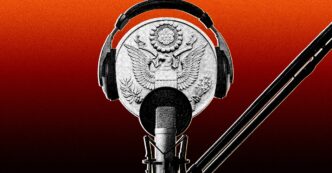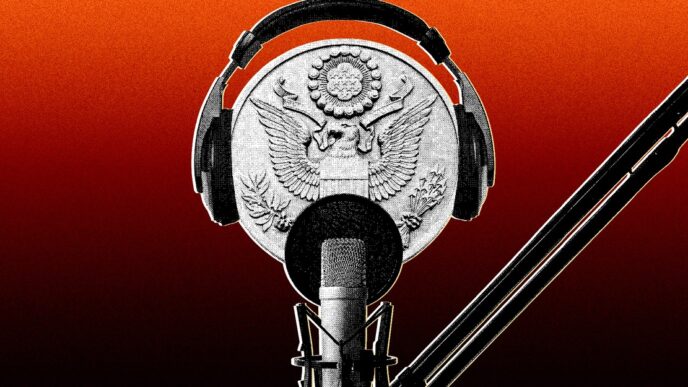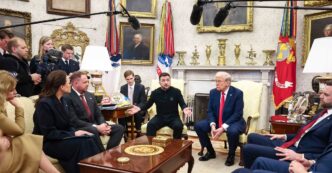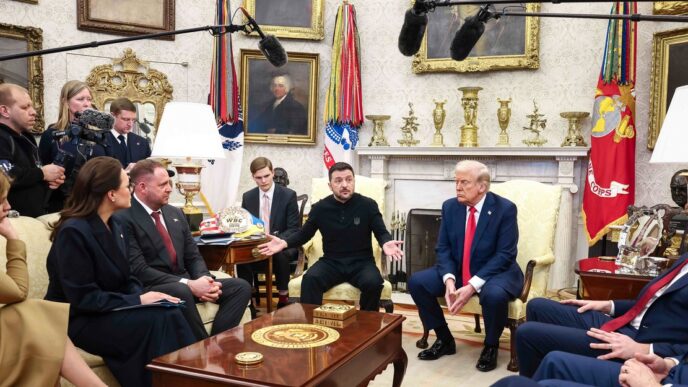In the early days, the second Trump administration cut food and medical help in life in the countries of the world. This has interrupted efforts to prevent adolescents from joining the drug cartels in Mexico. And that closed programs to reinstall the Afghans who helped American troops during the fight against the Taliban.
But at least at the beginning, the budget of works of art expensive to hang on embassies and consulates around the world has remained robust.
The State Department planned, for example, to buy a “sculpture suspended at triple height” of $ 650,000 for its embassy in Brasília. He had conceptions on a “wall installation” of $ 55,000 in Malawi. A “textile work” which costs $ 105,000 and a “suspended sculpture of $ 94,000 which extended on two levels” were on books for Maurice. And $ 550,000 was reserved for “three sculptures suspended from the ceiling” which would be hung on “the main atrium space” of the American embassy in Riyadh.
The planned purchases, which total nearly $ 2 million, have been described to me by an American government official with information plans of the State Department. The manager spoke under the cover of anonymity, for fear of reprisals. I checked the acquisitions provided by examining a government document – described earlier this month, weeks after Donald Trump took office – with detailed descriptions of the work of art.
When I asked questions about purchases scheduled for this week, a spokesperson for the State Department said they had been developed and approved by the Biden administration. The spokesman said in an email that “in accordance with the priorities of the Trump administration, all art-related purchases are suspended until further notice.” The spokesman added that “zero dollar taxpayers” had been spent on art.
But when he has pressure for purchases to be suspended or on how the prescription had been made, the spokesperson for the State Department did not respond specifically. The suspension of art purchases, said the spokesperson, was not the result of Trump’s executive action. Instead, the spokesperson said: “The purchase stops rooted in an organizational philosophy of reassessment to the objectives of the new administration in mind.”
Questioned a second time when the State Department had decided not to buy art anymore, the spokesperson provided no calendar or proof that purchases had been suspended before raising the question.
The lack of transparency on the suspension of art purchases contrasts with the joyfully public way in which Trump and Elon Musk, the co -founder of Billionaire Doge, tackled cuts with foreign aid. Trump administration has reduced the budget of foreign anime in the name of the stretching of “waste” and “fraud”. Musk, the richest man in the world, described Usaid, without evidence, as a “criminal” company and has praised to jump “big festivals” so that he can spend the weekend to feed the agency “Into the Wood Chipper”.
If art purchases had been passed, they would not have been out of the ordinary. These acquisitions are a basic food for public spending and count for the half-pourryage of the federal budget which is allocated to the State Department. The Art in Embassats of the Department program explains on its website that it “bridges cultures and strengthens links with our allies thanks to the power of visual art and creative exchanges”.
The program, describes as a collaboration with artists, museums, collectors and galleries around the world, “organizes a 60 exhibitions each year and has established more than 100 permanent art collections in diplomatic spaces covering 189 countries”.
But at a time when the budget of the foreigner is decimated, the planned purchases have stood out.
In Mexico City, before the cuts, USAID had been launching programs focused on stopping sexist violence and young people’s deterrence to join the cartels. Combined, the programs would have cost less than a million dollars for a year, said an external service agent based in Mexico. But these efforts are now suspended indefinitely. Meanwhile, the intention to install a paint of $ 110,000 outside the executive suite of the embassy was walking at the beginning of the month.
“Nothing they have made sense in terms of efficiency,” said the external service agent, who spoke under the guise of anonymity for fear of reprisals. “And so it is really not cool that anyone who makes these decisions think that $ 1 million in art is what the State Department should spend its money now.”
The Trump administration releases some 2,000 USAID workers in the United States and should recall almost all agency officers stationed abroad. Last week, a federal judge paid the way to the plan to move forward, most USAID employees based at international level given 30 days to return to the country.
“I will probably have to live in the basement of a family member,” said the external service officer based in Mexico. “Will they pay us; Will they fire us when we land? »»
In the hours after their entry into office, Trump issued a freezing of covers on foreign aid, including drugs to treat HIV and food for hungry children. In a few days, a shutdown order swept the USAID; Workers abroad were left in limbo, without capacity to work, because food and other supplies were unused. In recent weeks, while Musk and the White House have accused the workers of the USAID of crime and fraud without providing evidence, Pete Marocco, a Loyalist of Trump charged to the USAID, decided to systematically dismantle the agency.
Faced with a journalist with part of the disinformation he has spread over USAID, Musk replied: “Some of the things I say will be incorrect and should be corrected.” Since then, he has continued to display lies to his more than 200 million followers on X, his social platform.
On Wednesday, in a legal file, Moroccoco said that 92% of USAID contracts, totaling around 57 billion dollars, “were terminated” after an examination by the Secretary of State Marco Rubio.
Talked about art purchases provided before the apparent suspension, the current and licensed employees of the USAID reacted with derisory laughs and explanations.
“No, no,” said a recently dismissed USAID worker. “And then I am cut because I provide, like a fucking cereals, from American farmers to Kansas to farmers in southern Africa. Fuck that. “”
With about the same sum of money that had previously been reserved for the art of the embassy, the dismissed worker of the USAID said that the United States could continue to support farmers in southern Africa while the region is recovered from one of its worst droughts in recent history.
It was crucial to “get these seeds, to plant them before the rainy season. And we just give them. And now the taking has been drawn, “said the dismissed worker. “Now we leave these fields right, what, to rot?”
An external service agent who recently had to evacuate from the Democratic Republic of Congo told me that she was living in a basement with her husband and children. He was asked to return to Washington and to present himself at the USAID headquarters, only for the office to be closed to all the staff.
“I didn’t sleep; I haven’t eaten, ”said the officer. “My husband did none of these things either. We have both frantically applied for jobs and verified our finances. »»
“I am essentially in mourning the loss of a life, a profession, a security, a confidence in our government, perhaps all our personal effects and our democracy,” she told me.
In Doha, in Qatar, the State Department intended to acquire a series of $ 60,000 of drawings “of works on paper”. Qatar is one of the main treatment points for Afghan refugees, including those who helped the US government during his war against Taliban fighters and who are vulnerable to reprisals now that the Radical-Islamist movement is in power. More than 2,000 Afghans are stuck in Doha after Trump has suspended funding indefinitely for a program that has moved Afghans to the United States.
“I went to the ambassador’s houses in Mexico City and Doha, I went to these places, and there is already a ton of art,” said Shawn Vandiver, a naval veteran and the chief of #Afghanevac, a coalition of veterans and defenders helping Afghans who are looking for a resettlement.
“We cannot finance the care of our allies in wartime up to $ 18,000 per person,” said Vandiver, citing government figures. “But we can buy sculptures and art so that President Trump’s ambassadors can look at more pretty things in addition to the pretty things already there.”








